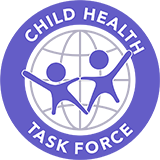Child Survival Action (CSA) is a renewed call to all partners—national governments, civic and traditional leaders, communities, and regional and global stakeholders—to end preventable child deaths. The initiative urges partners to join hands to address the programmatic and health system challenges that hamper progress in child survival, especially in countries not on track to meet their 2030 targets for under-five mortality. Addressing these barriers will require strong national and subnational leadership, expanding strategic investments in primary health care (PHC) and multi-sectoral actions, mobilizing partnerships across stakeholders, and aligning funding and other initiatives. The initiative identifies opportunities that exist and lays out the steps that partners need to take to reach all children with life-saving interventions, aligning with maternal, newborn, adolescent, and reproductive health efforts to ensure survival across the life course and continuum of care.
CSA complements other efforts that promote the continuum of care for maternal, newborn, and child health, including Every Woman, Every Child, Everywhere (EWENE) and the Partnership for Maternal, Newborn, and Child Health (PMNCH). The initiative is also aligned with programs focused on reaching the unreached, for example children who are zero-dose for essential immunizations, which are critical to ending child mortality.
Key components to consider in a country-led CSA initiative include:
- Sharpened, prioritized, and costed national and subnational plans that cover the full spectrum of essential child health services, particularly those focused on the leading causes of child mortality beyond the first month of life - pneumonia, malaria, diarrhea, and congenital conditions. Plans should be evidence-based and consider robust linkages between relevant health programs (e.g. IMCI, iCCM, immunization, malaria control) and other sectors that contribute to child health (e.g. nutrition, WASH, environment). They should also be balanced to support the continuum of care, from pregnancy through early childhood, in communities and across health service platforms, and developed under government leadership with the engagement of affected communities, civil society, and other stakeholders.
- Committed, informed, and effective health leadership and management must be in place at national and subnational levels to support the implementation of sharpened plans. Leadership and management provide essential stewardship of national and subnational strategies, mobilize and coordinate resources and partners, ensure the robust implementation of prioritized efforts, and are accountable to governments and communities for achieving the outcome.
- Collaboration across child health, maternal health, newborn health, immunization, nutrition, and health promotion is critical to enable coordinated action in delivering inclusive and comprehensive health services. Additionally, multi sectoral collaborations with WASH, clean air, child protection, education and social welfare are critical to the overall objective of accelerating reductions in child mortality.
- Effective resource mobilization that combines not only domestic financing, external pooled investments, and innovative approaches, but also a commitment to making better use of existing resources
- An equity-sensitive approach that builds upon the actions to reach zero-dose and under-immunized children, as well as those with acute malnutrition and wasting, to reduce the risk of mortality in highly vulnerable children
- A robust monitoring and accountability framework is essential to track progress, increase commitment and improve responsiveness. Locally available data from multiple sources, including health information systems, health facility assessments, population-level surveys, and in-depth studies, should be leveraged to identify populations in need of special attention. Health leadership and management skills and capacities should be strengthened to capture, analyze, and use data for decision-making.
For more information regarding the Child Survival Action initiative, visit the CSA Hub page on the Child Taskforce Website or read the full narrative document here (PDF, 2.9 MB).
